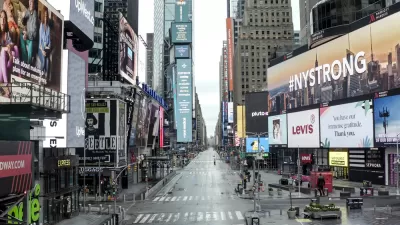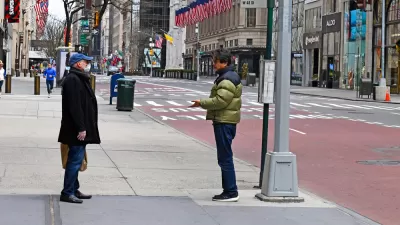As the infection rate at jails in places like New York began to climb, officials started looking for criteria to use in determining which inmates could be released. Then they ran into a familiar but now heightened dilemma.

In March, as the reality of just how deadly and widespread the novel coronavirus would be began to sink in, advocates and service providers who work with prison and jail inmates began sounding alarm bells across the country: prisons were sure to become death pits. Eight of the 10 infection hot spots nationally are jails and prisons, according to The New York Times.
The infection rate in New York City’s Rikers Island jail is 8.14 percent compared to 1.31 percent in the city as a whole, according to The Legal Aid Society, a nonprofit that provides legal assistance to vulnerable and underserved populations. On May 6, the state’s Department of Corrections and Community Supervision reported a total of 1,143 staff infected statewide, plus 415 prisoners and 53 parolees. Four staff members have died due to the infection, as well as 15 inmates and four parolees. As testing of the inmate population appears to be drastically lacking and many people with the infection can be asymptomatic, advocates expect that the numbers are actually much higher.
Inmates in prisons and jails across New York describe squalid conditions where they are still forced to interact with fellow inmates, must wrap their faces with scarves or fabric scraps, and are told to clean their own rooms but are given no cleaning supplies. Visits from family members and lawyers to these facilities are banned. Guards, too, complain they have not been given personal protective gear, or have been told they are not allowed to wear it, yet are still required to perform highly invasive contraband checks.
As the infection rate at jails in states like California and New York, where the virus first took hold, began to climb and inmates got word out to the public about the conditions they are living in, officials began, grudgingly, looking for criteria to use in determining which categories of inmates to release. And then they ran into a familiar but now heightened dilemma—finding housing for the formerly incarcerated is never easy.
Inmates who are being paroled or released early must have a housing plan arranged before they can walk out of prison. Typically, this is done via family, lawyers, or nonprofit groups that arrange a living situation. “They don’t release someone to the street,” says Anthony Dixon, director of community engagement for the Manhattan-based Parole Preparation Project. “A parole officer has to go to [the place they intend to live] prior to release to check it out to make sure there are no drugs … that it will be a place that won’t present problems.”
Finding this type of housing can be a challenge during normal times, but Dixon says with the system now handling those who were already scheduled to be paroled, as well as those released due to COVID-19, there is an overflow.
....
FULL STORY: Pandemic Leads to Early Prisoner Release; Finding Housing Remains Difficult

Alabama: Trump Terminates Settlements for Black Communities Harmed By Raw Sewage
Trump deemed the landmark civil rights agreement “illegal DEI and environmental justice policy.”

Planetizen Federal Action Tracker
A weekly monitor of how Trump’s orders and actions are impacting planners and planning in America.

The 120 Year Old Tiny Home Villages That Sheltered San Francisco’s Earthquake Refugees
More than a century ago, San Francisco mobilized to house thousands of residents displaced by the 1906 earthquake. Could their strategy offer a model for the present?

Ken Jennings Launches Transit Web Series
The Jeopardy champ wants you to ride public transit.

BLM To Rescind Public Lands Rule
The change will downgrade conservation, once again putting federal land at risk for mining and other extractive uses.

Indy Neighborhood Group Builds Temporary Multi-Use Path
Community members, aided in part by funding from the city, repurposed a vehicle lane to create a protected bike and pedestrian path for the summer season.
Urban Design for Planners 1: Software Tools
This six-course series explores essential urban design concepts using open source software and equips planners with the tools they need to participate fully in the urban design process.
Planning for Universal Design
Learn the tools for implementing Universal Design in planning regulations.
Clanton & Associates, Inc.
Jessamine County Fiscal Court
Institute for Housing and Urban Development Studies (IHS)
City of Grandview
Harvard GSD Executive Education
Toledo-Lucas County Plan Commissions
Salt Lake City
NYU Wagner Graduate School of Public Service





























